By Dave McCracken General Manager

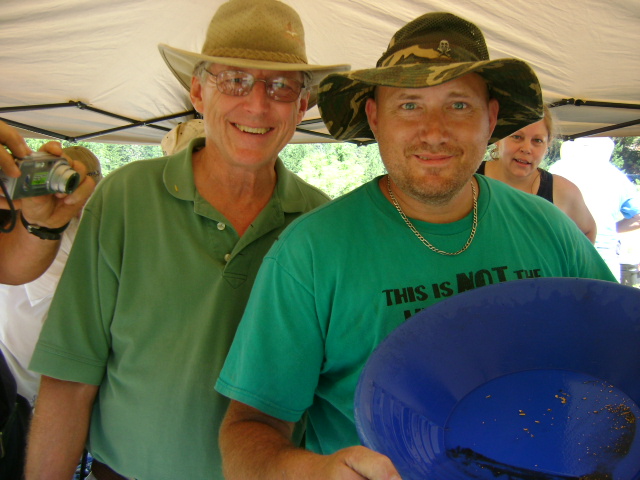
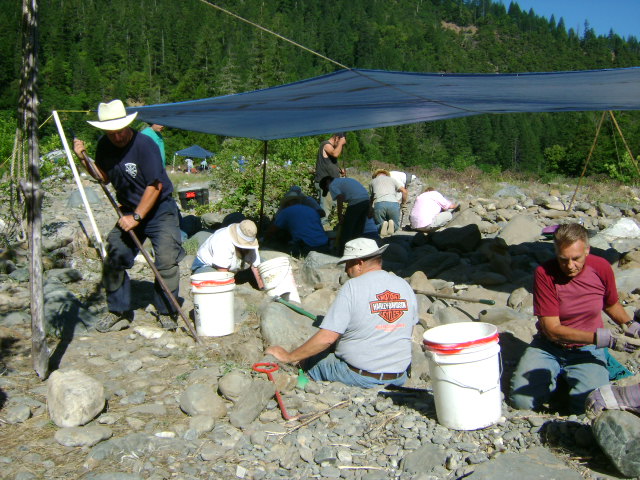
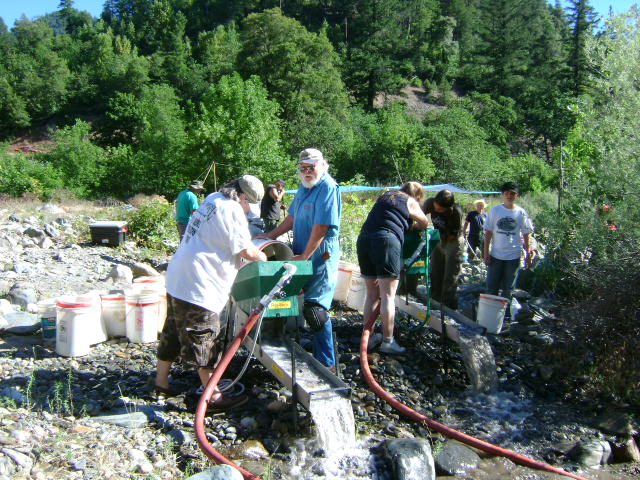
Weekend projects are always a lot of fun. This is especially true when plenty of enthusiastic members show up. With 86 members present on Saturday morning, this was probably going to be the largest turnout of the season!
Without a bunch of experienced helpers present, I would not be able to manage a mining project with so many people. So I would like to take this opportunity to give a big thank you to the following members who routinely participate on these projects, providing helpful guidance and coordination to make the program fun and exciting for everyone: Craig Colt, Rich & Connie Krimm, Lee Kracher, Ray & Eimer Derek, Alan Mash, Chuck Montgomery and John & Diane Leslie.
We always begin these weekend projects on Saturday morning with introductions over at the Lions hall in Happy Camp. It is very interesting to hear where people have arrived from. People come from all over the world. As we all go around the room introducing ourselves, I have the opportunity to size up the team and plan better how to move forward once we get out on the ground.
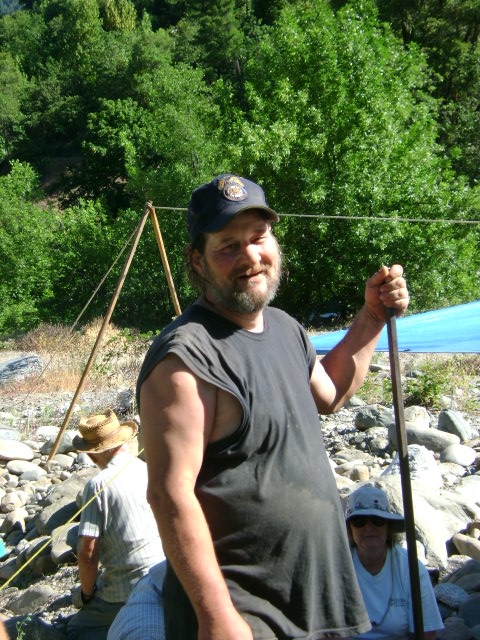 Over the years, I have discovered that every single group is different. It is something about how the combined social chemistry comes together. This all gels during introductions on the first morning. Some groups are more enthusiastic than others. Enthusiasm drives success in gold mining. This is especially true on these group projects; because, with coordination though my helpers, we can direct the enthusiasm into the necessary physical effort to locate and process pay-dirt out on the mining property. The more of the right kind of pay-dirt that we process, the more gold we will split off on Sunday afternoon.
Over the years, I have discovered that every single group is different. It is something about how the combined social chemistry comes together. This all gels during introductions on the first morning. Some groups are more enthusiastic than others. Enthusiasm drives success in gold mining. This is especially true on these group projects; because, with coordination though my helpers, we can direct the enthusiasm into the necessary physical effort to locate and process pay-dirt out on the mining property. The more of the right kind of pay-dirt that we process, the more gold we will split off on Sunday afternoon.
Fortunately, this was a highly-motivated group. When I see that on Saturday morning, I already know we are going to have a good weekend. After introductions, I took some time to introduce how and why The New 49’ers came into existence, and why we schedule 5 or 6 of these weekend projects every season. Then, I launched into a 2-hour discussion on how to prospect for gold. The purpose is to explain the reasons for what we will be doing during the remainder of the weekend.
Saturday afternoon found us all up on K-15A, otherwise known as the “Mega Hole.” This is one of our more popular mining properties these days for surface mining activity like panning, sluicing & high-banking.
We always start the afternoon by explaining what we know about where gold is already being discovered on the property. On the upper portion of K-15A, while we have found good gold in deeper layers, we focus our efforts during the weekend projects to finding the high-grade gold deposits which are common in the upper-most layer of streambed. This is because we do not have enough time over the weekend to develop deeper layers. We leave those to members that will be around for a while.
At least in our area of the world, nearly all high-grade gold is found concentrated on top of bedrock, or on top of the different hard-packed layers of streambed. The gold is not distributed evenly all throughout a layer. In fact, it is only rarely that you will find enough gold up inside of a storm layer to make mining worthwhile. The high-grade is nearly always located at the bottom of a layer. This is because the gold is so much heavier than average streambed material, it nearly always deposits down along the hard surface of whatever the layer is resting upon. This is one of the most important things we try to teach to beginning miners. If you know where the gold concentrations are most likely to be, then you know where to focus your sampling efforts.
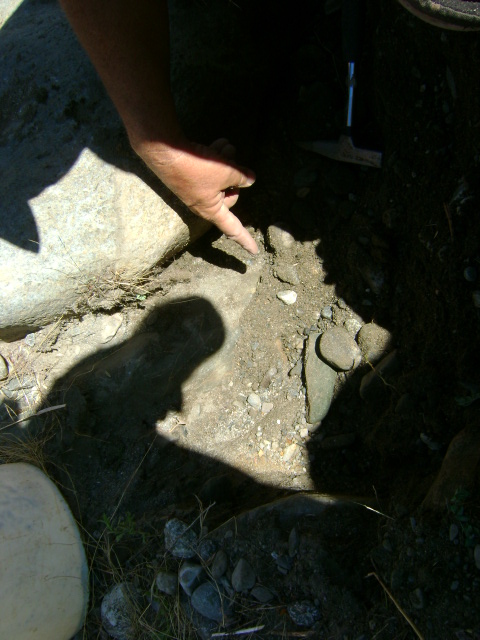 Another of the first things we do once out in the field, is to show everyone what hard-pack streambeds are, what the different layers look like, and exactly where we have been finding the high-grade out there. By “where,” I am mainly talking about the layer which is producing gold. In this case, we have been having our best results by mining the top layer of hard-pack down to where it rests upon a different layer of dark brown material. The depth of this layer change can be from several inches to two feet, depending upon where you dig.
Another of the first things we do once out in the field, is to show everyone what hard-pack streambeds are, what the different layers look like, and exactly where we have been finding the high-grade out there. By “where,” I am mainly talking about the layer which is producing gold. In this case, we have been having our best results by mining the top layer of hard-pack down to where it rests upon a different layer of dark brown material. The depth of this layer change can be from several inches to two feet, depending upon where you dig.
If you want to do effective sampling using a gold pan, you want to get as much of the right material into your pan as you can. By “right material,” I mean two things: First, if you are going to sample the bottom of a particular layer, you want to clear away most of the material which is over top of the surface that you are targeting for a sample. The reason for this is that most of the gold concentration will be sitting right on top of the surface which the layer is resting upon. There will not be much gold up into the layer. The more low-grade material which you place into your pan from material above the surface, the less gold-bearing material you will process in the pan, and the less gold will end up in your pan-sample. Bottom line: While you can never get it perfect, you should try to clear away as much of the material above the surface as you can before placing surface material into your pan.
The second part of this has to do with screening. If 99% of the gold you are going to recover while sampling will pass through a #8 classification screen, then you should be classifying (screening) all of the +8 material out of your sample. Otherwise you are filling your pan mostly with pebbles and rocks which are almost guaranteed to include no gold.
Knowing how to sample classified material off the surface of targeted layers in the streambed is the main key to being able to discover high-grade gold deposits. This is so important, before setting everyone on their own, I always provide a demonstration of how to clear away the material from the contact zone between two separate layers and collect a sample. Here is a video sequence showing me demonstrate this very important principle:
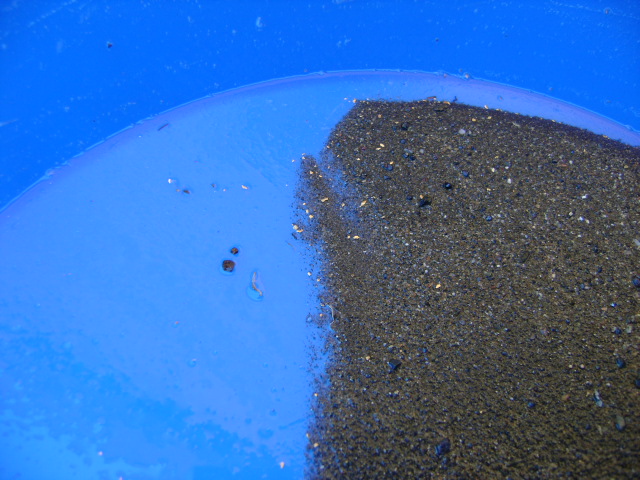 Since there are always beginners present, I also provide a panning demonstration for those who want to see it. Panning is not difficult. It is basically a process where you place your sample material in suspension within the pan. This way, the gold can work its way down deeper into the pan through other materials which are not as heavy. Then the lighter materials are swept out of the pan. While the process is rather easy, it usually requires some practice; and you have do it for a while to build confidence that you are not losing gold. My helpers and I devote a good part of Saturday afternoon helping beginners with their panning technique. This is because you cannot sample unless you can operate a gold pan without losing the gold. We don’t like to let anyone get away without learning the technique!
Since there are always beginners present, I also provide a panning demonstration for those who want to see it. Panning is not difficult. It is basically a process where you place your sample material in suspension within the pan. This way, the gold can work its way down deeper into the pan through other materials which are not as heavy. Then the lighter materials are swept out of the pan. While the process is rather easy, it usually requires some practice; and you have do it for a while to build confidence that you are not losing gold. My helpers and I devote a good part of Saturday afternoon helping beginners with their panning technique. This is because you cannot sample unless you can operate a gold pan without losing the gold. We don’t like to let anyone get away without learning the technique!
Here is a video sequence which captured me demonstrating the panning process to the participants:
Even before we all arrived on the very large gravel bar located at the upper-end of K-15A, my helpers had already confirmed an entirely new line of gold that we did not even know existed before. One of our very supportive members, Danny Collins, along with a few other members, had already been working the new gold line – which was even further away from the river than the gold line that we had established on the earlier weekend project. That’s the thing about having so many experienced miners in our Club; there are new and exciting strikes being made all the time!
The new strike was also right on top of the dark brown layer averaging about a foot below the surface. We must have had 60 people out there sampling into that layer! My helpers were busy forming up their crews for the following day. They had already made a plan to set up 4 high-bankers to process pay-dirt from two separate pretty good strikes.
Since we were prospecting on the road-side of the river, participants can stay out there as long as they like on Saturday afternoon. You get to keep all the gold you find on the first day. There were quite a few members still out there panning when I called it quits.
Saturday night potluck was held at the Lions Club. There were so many members present; we had to set up some extra tables outside. Man, was there a lot of food! There was also a lot of excitement and good feelings in the group chemistry. I have been managing this organization for 25 years, so I have an acute sensitivity to how the group is feeling. There were a lot of happy people here. This was good!
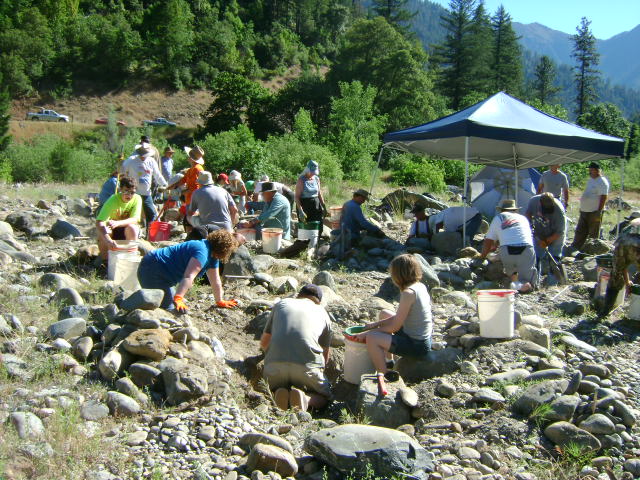
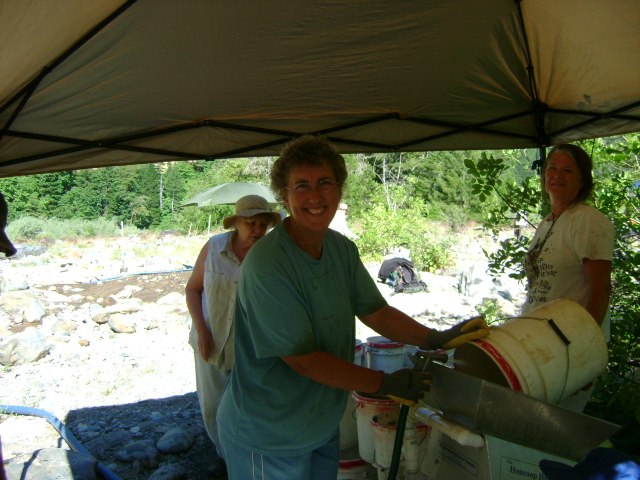
Since the hot summer weather had started just a few days before, the team leaders were asking everyone to meet out at the work site at 7 O’clock on Sunday morning. The idea was to get the hard physical work done before the worst heat of the day. Most participants arrived even before I did. Team leaders had their crews digging down to the top of the brown layer, filling buckets half full with pay-dirt, packing the material to the high-bankers, and feeding pay-dirt into the recovery systems. Everything was running 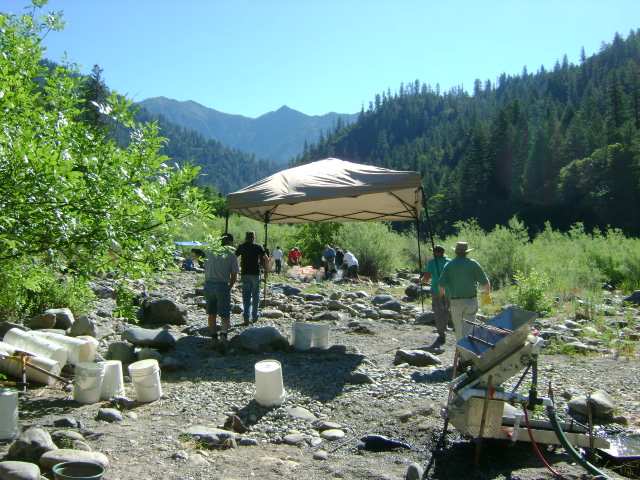 smoothly. Here are three video segments which captured some of the action:
smoothly. Here are three video segments which captured some of the action:
We had set up several shade areas where participants could get a break from the sun.
Because Danny Collins was planning to switch to suction dredging on the Rogue River the following day, he handed over his active high-banking hole to the weekend project. That was a perfect example of our Club Motto: Miners helping Miners! For that, I placed Danny in charge of that digging team. He then made it his personal mission to make sure that team was going to recover the most gold.
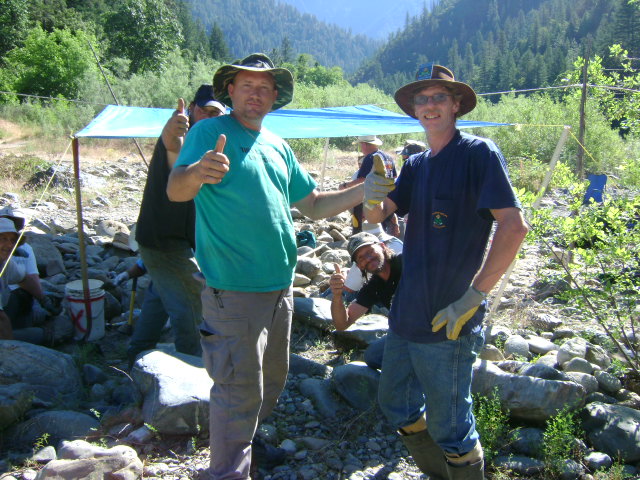
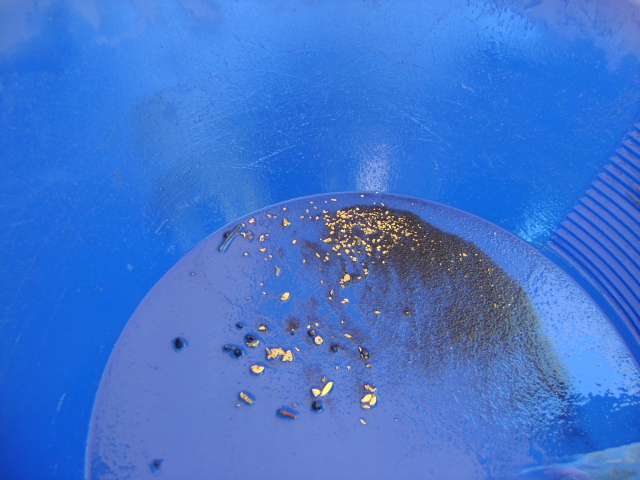
We always designate a few experienced members to continue sampling the material that we are digging on these projects. This is because sometimes the gold concentrations in the streambed just disappear on you. The only way to know that you are still digging pay-dirt is to keep testing it every once in a while. You can do this with a gold pan. You can also clean up the upper portion of the recovery system on your high-banker every once in a while to make sure the gold is adding up. Danny was doing all of this for his digging team, and showing them the results to keep them motivated. It was working! This video segment captured some of the excitement we were all experiencing:
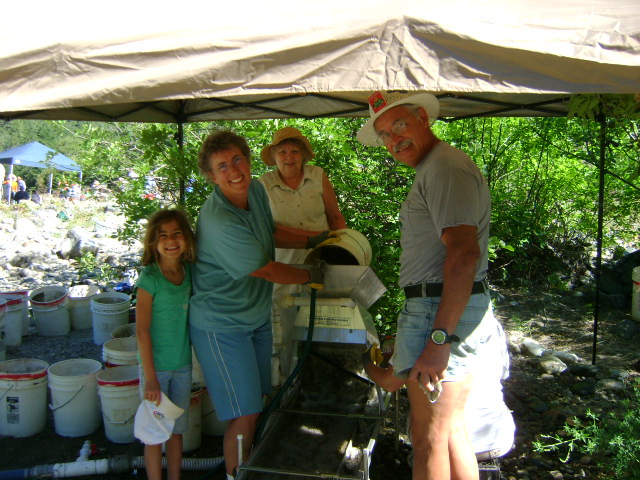
Craig Colt and Lee Kracher were sampling for the other digging team. That group was also doing well.
It always pleases me to see whole families coming out on these projects. Sometimes the kids outwork most of the adults! Other times, the kids do not fully appreciate the activity until it is time to collect their split of the gold at the end of the project. But I am certain that all of the kids who participate will fully appreciate the experience at some later point in their lives. After all, how many kids have an opportunity to go out and successfully mine for gold? I have been doing this so long now, sometimes I am rewarded to meet someone who I first knew as just a young kid, but who has since grown up and returned with young kids of his or her own. Kids grow up so fast! Here is some video we captured of the Miller family on their first gold mining adventure: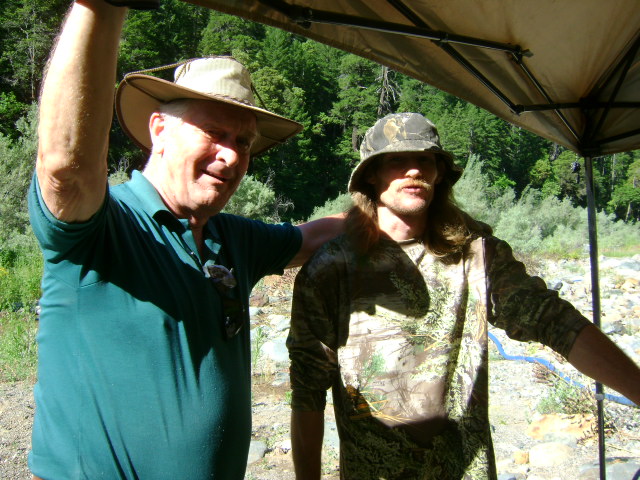
In addition to showing members how to prospect and mine for gold on these weekends, we also demonstrate how to operate within our surface mining guidelines. Mainly, this is a matter of not allowing our excavations get too large (we back fill the holes as we go), keeping our excavations well away from the river, and not allowing dirty water to flow back into the active waterway. Rich Krimm plays an important role in the Club’s internal affairs, so he usually takes on the job of making sure that we allow the water from our recovery systems to settle out up on the surface. This is pretty easy to accomplish along the upper portion of K-15A. Here is some video we captured of Rich while he was looking after this responsibility:
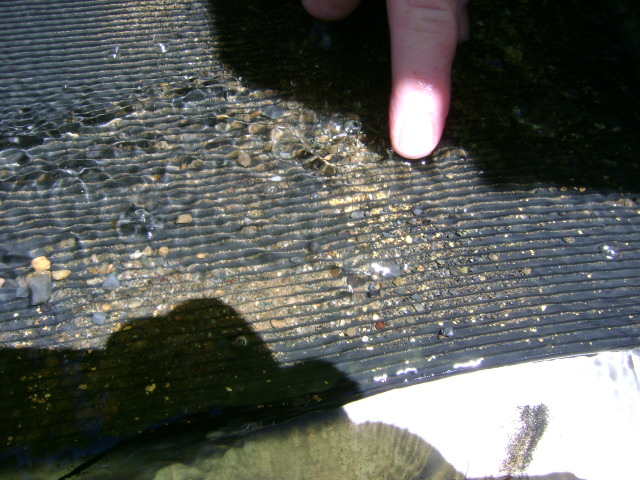
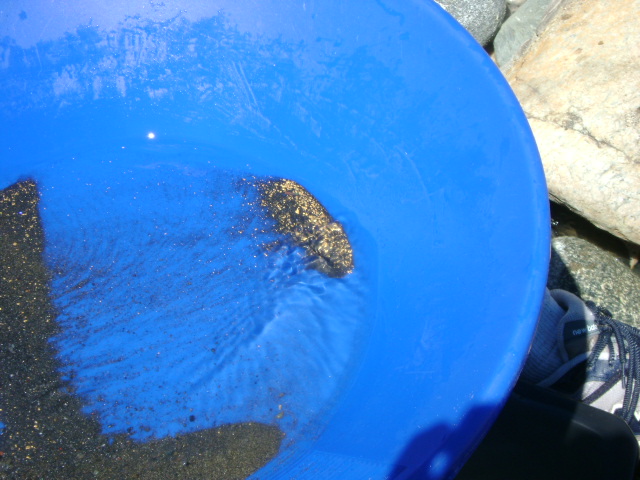
Participants bring a lunch out with them on Sunday, but we seldom shut everything down for lunch. People just take a break when they are ready. We did shut down the high-bankers several times to see if the gold was adding up in the recovery systems. It was! Here follows my explanation of what was happening out there:
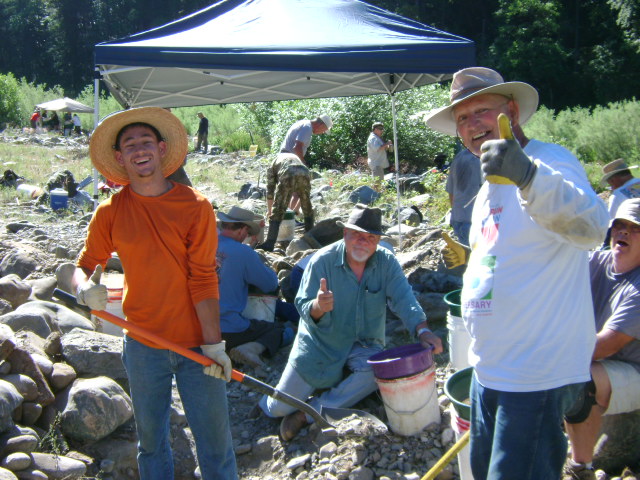
Our team leaders have good judgment about when we should begin winding things down out in the field. This is usually when the buckets are not getting refilled fast enough to feed the high-bankers! As long as the gold is adding up alright, we do not see any reason to overdo the physical exertion. Some people are not used to doing hard physical labor out in the hot sun. So we knocked off at about noon on Sunday. But later, after everyone realized how good the gold added up, there was general consensus that we should have kept going for another hour. Oh well; we will work harder next time!
We invested a little more time out there to dismantling the high-bankers and back-filling our holes. This didn’t take long with as many people as we had.
An hour or so later found us all together doing final clean-up steps at the Lions hall in Happy Camp. This is where we demonstrate how to separate the thousands upon thousands of small flecks of gold from all the other heavy materials which collect in a recovery system; mostly particles of iron. We use a simple system which does not require the use of any chemicals.
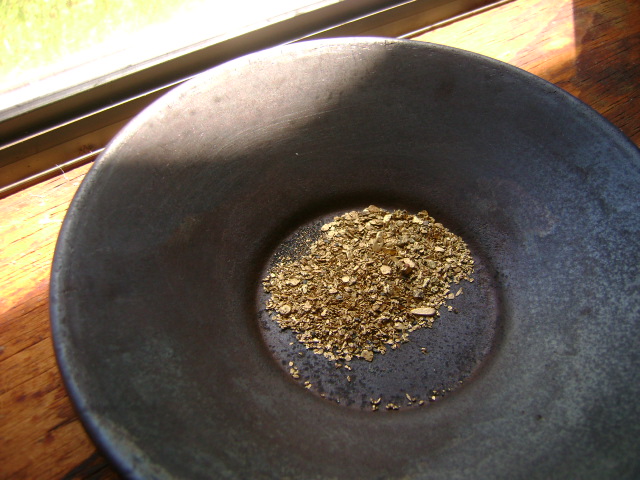
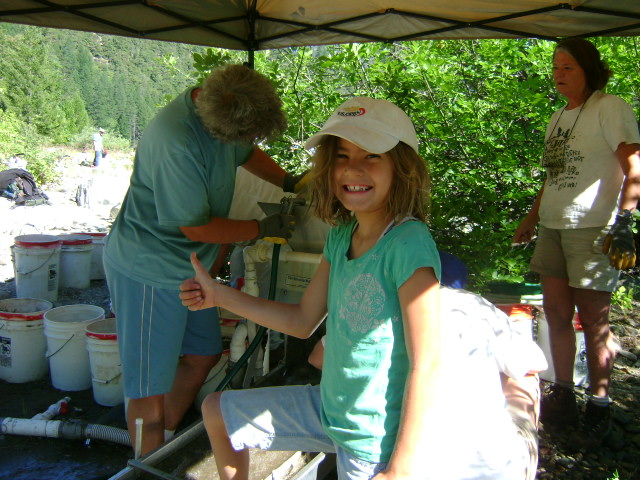
In all, we recovered 12.8 pennyweights of gold, including 23 beautiful gold nuggets. That’s a little less than ¾ of an ounce. There were 71 smiling faces present to collect an equal share of the gold. And that was the end of another wonderful weekend on the Klamath River!





